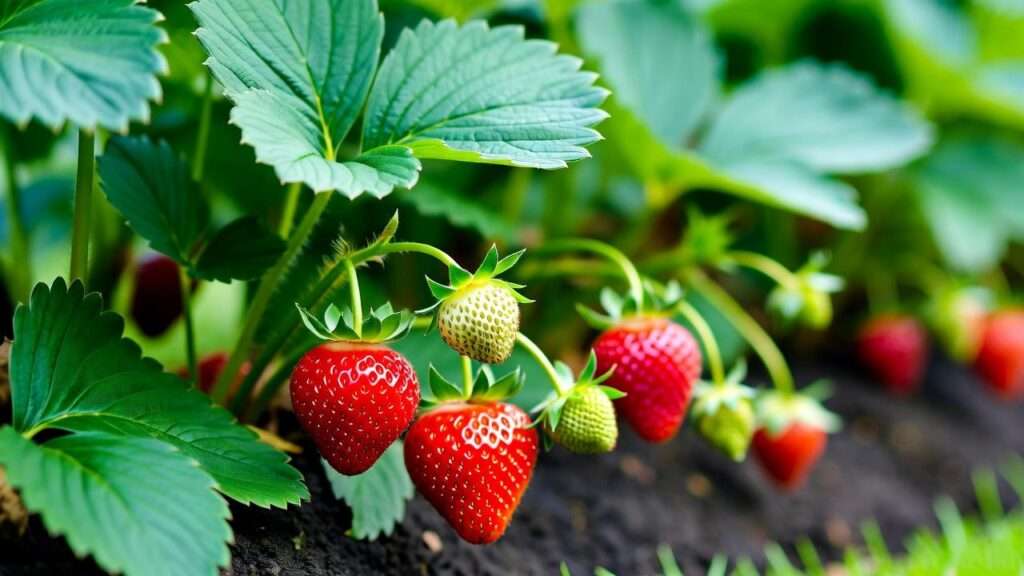Imagine sinking your teeth into a plump, juicy Honeoye strawberry, freshly picked from your own garden—sweet, vibrant, and bursting with flavor! 🍓 Growing Honeoye strawberry plants at home is not only rewarding but also easier than you might think. Whether you’re a novice gardener or a seasoned green thumb, this guide will equip you with expert-backed strategies to cultivate thriving Honeoye strawberries that yield bountiful harvests. Known for their rich red color and adaptability, these berries are a favorite for home gardens. In this comprehensive article, we’ll share seven essential tips—rooted in horticultural expertise and practical experience—to help you overcome common challenges and grow vibrant, healthy plants. Let’s dive into the world of Honeoye strawberries and transform your garden into a berry paradise! 🌿
Understanding Honeoye Strawberry Plants 🌿
What Makes Honeoye Strawberries Special?
Honeoye strawberry plants, a June-bearing variety developed in New York, are celebrated for their large, bright red berries and sweet-tart flavor. Introduced in 1979 by Cornell University, these strawberries are a top choice for home gardeners due to their high yields, disease resistance, and versatility. Whether enjoyed fresh, frozen, or turned into jams, Honeoye berries deliver exceptional quality. According to Dr. Marvin Pritts, a horticulture professor at Cornell, “Honeoye’s vigor and adaptability make it ideal for beginners and experts alike.” Its ability to thrive in various climates (USDA Zones 3-8) adds to its appeal, making it a staple in backyards across North America.
Ideal Growing Conditions for Honeoye Strawberries
To grow thriving Honeoye strawberry plants, you need to provide the right environment. These plants prefer well-drained, loamy soil with a pH between 5.5 and 6.5. Test your soil using a home kit or send a sample to your local agricultural extension for precise results. Honeoye strawberries require 6-8 hours of direct sunlight daily to produce sweet, robust fruit. They also need good air circulation to prevent fungal issues. Tip: If your soil is heavy clay or overly sandy, amend it with compost or aged manure to improve drainage and fertility before planting.
Tip 1: Choosing the Right Planting Location 📍
The foundation of a successful strawberry patch lies in selecting the perfect spot. Honeoye strawberry plants thrive in sunny, well-drained locations with good air flow. Avoid low-lying areas where water pools or shaded spots that limit sunlight. Poor site selection can lead to weak plants and low yields. For example, Sarah, a gardener from Ohio, transformed her backyard by choosing a south-facing slope for her Honeoye patch, resulting in a bumper crop within a year. To evaluate your site, check for sunlight exposure, test soil drainage by digging a hole and filling it with water (it should drain within 4 hours), and ensure the area is free from perennial weeds. Clear debris and till the soil to prepare a welcoming bed for your plants.
Tip 2: Planting Honeoye Strawberries for Success 🌱
When and How to Plant
Timing is critical for establishing healthy Honeoye strawberry plants. The best times to plant are early spring (after the last frost) or late summer (6-8 weeks before the first frost) to allow roots to develop. Space plants 12-18 inches apart in rows 3-4 feet apart to promote air circulation and prevent disease. When planting, ensure the crown (where roots meet leaves) sits just above the soil surface—too deep can cause rot, while too shallow can dry out roots. Water thoroughly after planting to settle the soil.
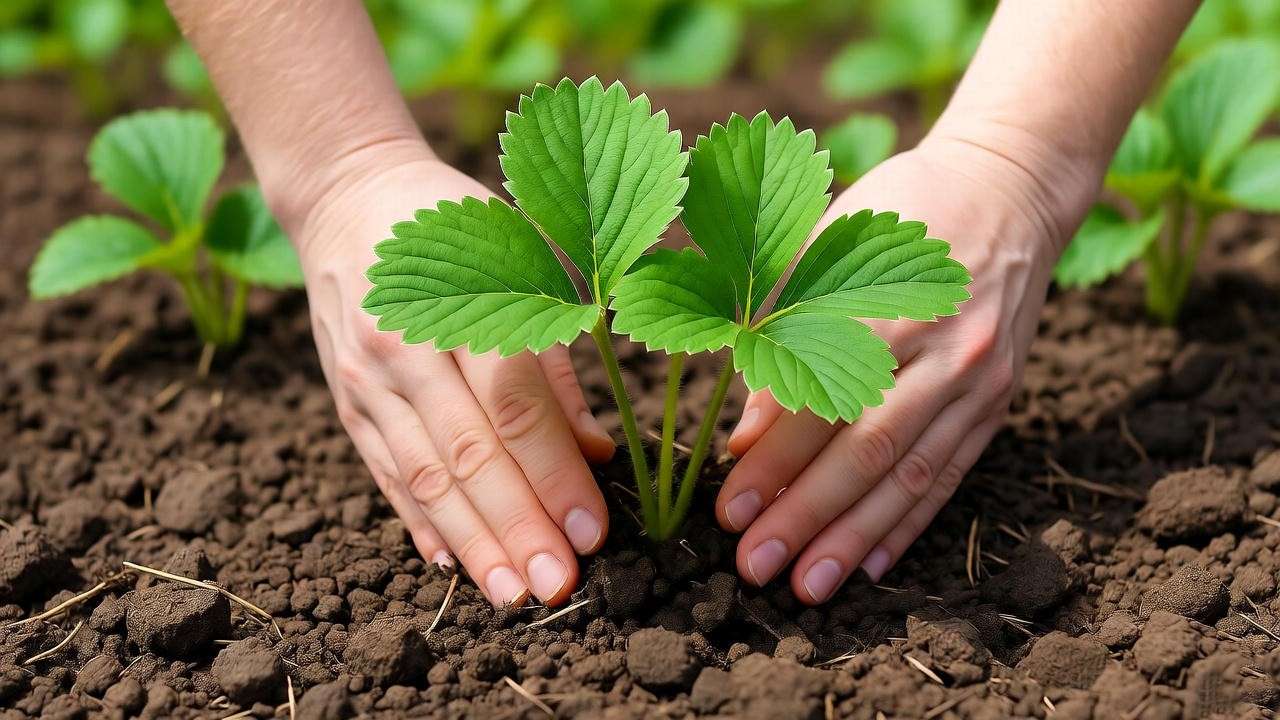
Bare-Root vs. Potted Plants
Honeoye strawberries are available as bare-root or potted plants. Bare-root plants are cost-effective and widely available from reputable nurseries like Stark Bro’s or Johnny’s Selected Seeds. They’re dormant, making them easier to ship and plant. Potted plants, while pricier, offer a head start with established roots. Inspect all plants for signs of disease (e.g., discolored leaves or mushy roots) before planting. Tip: Soak bare-root plants in water for 30 minutes before planting to rehydrate them and boost establishment.
Tip 3: Watering and Irrigation Best Practices 💧
Consistent moisture is key to growing lush Honeoye strawberry plants. Aim for 1-2 inches of water per week, adjusting based on rainfall. Overwatering can lead to root rot, while underwatering stresses plants, reducing fruit quality. Drip irrigation is ideal, delivering water directly to the root zone without wetting foliage, which helps prevent fungal diseases. According to a 2023 study from Penn State Extension, drip-irrigated strawberry fields showed a 20% higher yield compared to overhead watering. Check soil moisture by inserting a finger 2 inches deep—if it feels dry, water immediately. Watch for signs of stress, like wilting leaves or small, dry berries, and adjust your watering routine accordingly.
Tip 4: Fertilizing for Healthy Growth and High Yields 🌾
Honeoye strawberry plants need balanced nutrients to produce robust fruit. Before planting, incorporate a balanced fertilizer (e.g., 10-10-10) into the soil at a rate of 1 pound per 100 square feet. During the growing season, apply a nitrogen-rich fertilizer (e.g., 21-0-0) every 4-6 weeks, but avoid over-fertilizing, which can lead to excessive foliage at the expense of fruit. Organic options like compost or fish emulsion work well for eco-conscious gardeners. Tip: Brew a simple compost tea by steeping 1 gallon of compost in 5 gallons of water for 24 hours, then dilute and apply to the soil for a nutrient boost.
Tip 5: Mulching and Weed Control 🪴
Mulching is a game-changer for Honeoye strawberry plants. It retains soil moisture, regulates temperature, and suppresses weeds that compete for nutrients. Straw is a popular choice, applied 2-4 inches thick around plants after the soil warms in spring. Pine needles or black plastic also work well, especially in wet climates. For weed control, hand-pull weeds regularly to avoid root disturbance. A gardener in Michigan reported doubling her Honeoye yield after switching to straw mulch, which kept weeds at bay and maintained consistent soil moisture. Avoid chemical herbicides unless absolutely necessary, as they can harm beneficial soil organisms.
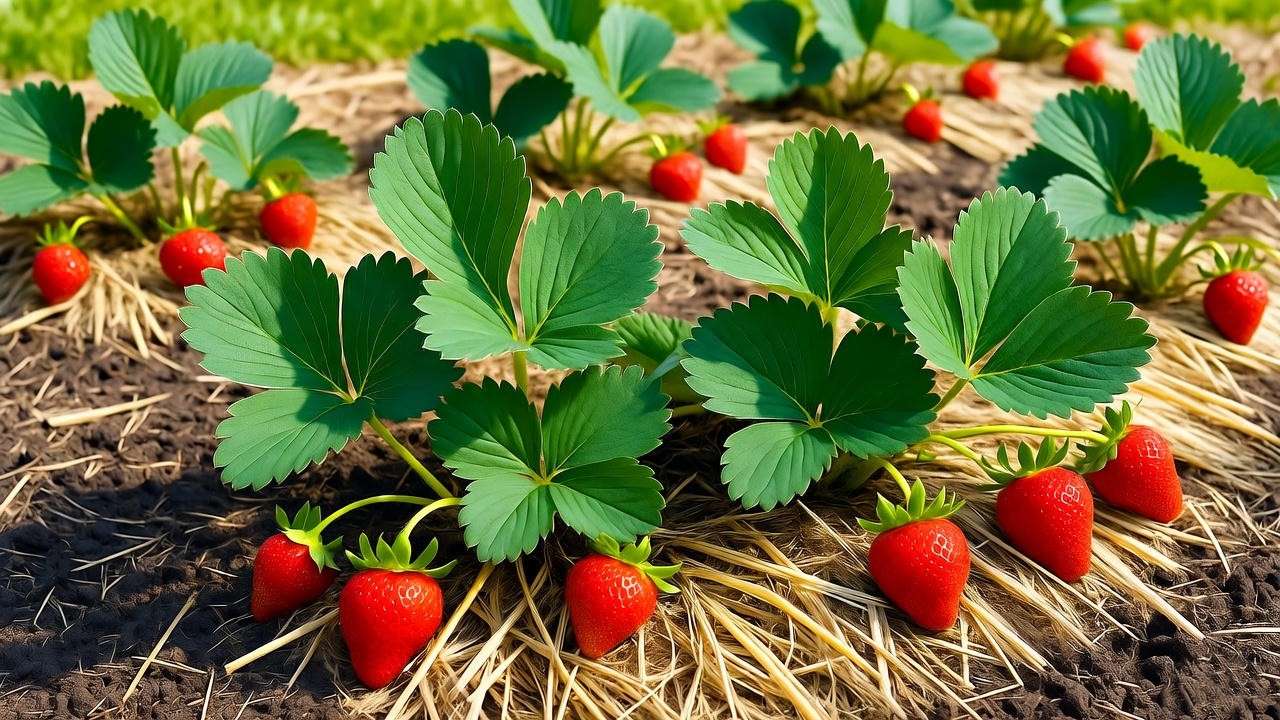
Tip 6: Pest and Disease Management 🐛
Common Pests
Honeoye strawberry plants, while hardy, can attract pests like aphids, spider mites, and slugs. Aphids are small sap-sucking insects that cluster on new growth, causing leaves to curl. Spider mites, barely visible to the eye, create fine webbing and stippled leaves. Slugs, active at night, chew irregular holes in berries. For organic control, introduce beneficial insects like ladybugs to combat aphids or use neem oil sprays (diluted per label instructions) for mites. To deter slugs, set up beer traps—shallow containers filled with beer buried level with the soil attract and drown them. Tip: Plant marigolds or garlic near your strawberries as companion plants to repel pests naturally. Regular inspection, especially under leaves, helps catch infestations early.
Disease Prevention
Fungal diseases like gray mold (Botrytis cinerea), leaf spot, and root rot can affect Honeoye strawberries. Gray mold appears as fuzzy gray growth on berries, thriving in humid conditions. Leaf spot shows as purple or brown spots on leaves, while root rot causes wilting due to overly wet soil. Preventive measures include proper spacing (12-18 inches) for air circulation, avoiding overhead watering, and practicing crop rotation every 3-4 years. A 2024 study from Cornell University highlights that Honeoye’s natural disease resistance can be maximized with good cultural practices. Remove and destroy affected plant parts immediately to prevent spread. Expert Insight: Dr. Courtney Weber, a strawberry breeder at Cornell, recommends mulching with straw to reduce soil splash, a common cause of fungal spread.
Tip 7: Pruning and Runner Management ✂️
Pruning Honeoye strawberry plants encourages fruit production over excessive vegetative growth. June-bearing varieties like Honeoye produce runners—long stems that form new plants. While runners can propagate new plants, too many can sap energy from the mother plant. During the first year, pinch off all runners to focus energy on root and crown development. In subsequent years, allow a few runners to root for patch expansion, but trim excess with clean shears. Post-harvest renovation is critical: after the final harvest (typically June), mow or trim foliage to 1-2 inches above the crown, remove debris, and fertilize lightly to rejuvenate plants. Tip: Use renovated plants to start a new bed every 3-4 years to maintain vigor and yield. A gardener in Pennsylvania reported a 30% yield increase after consistent runner management and annual renovation.
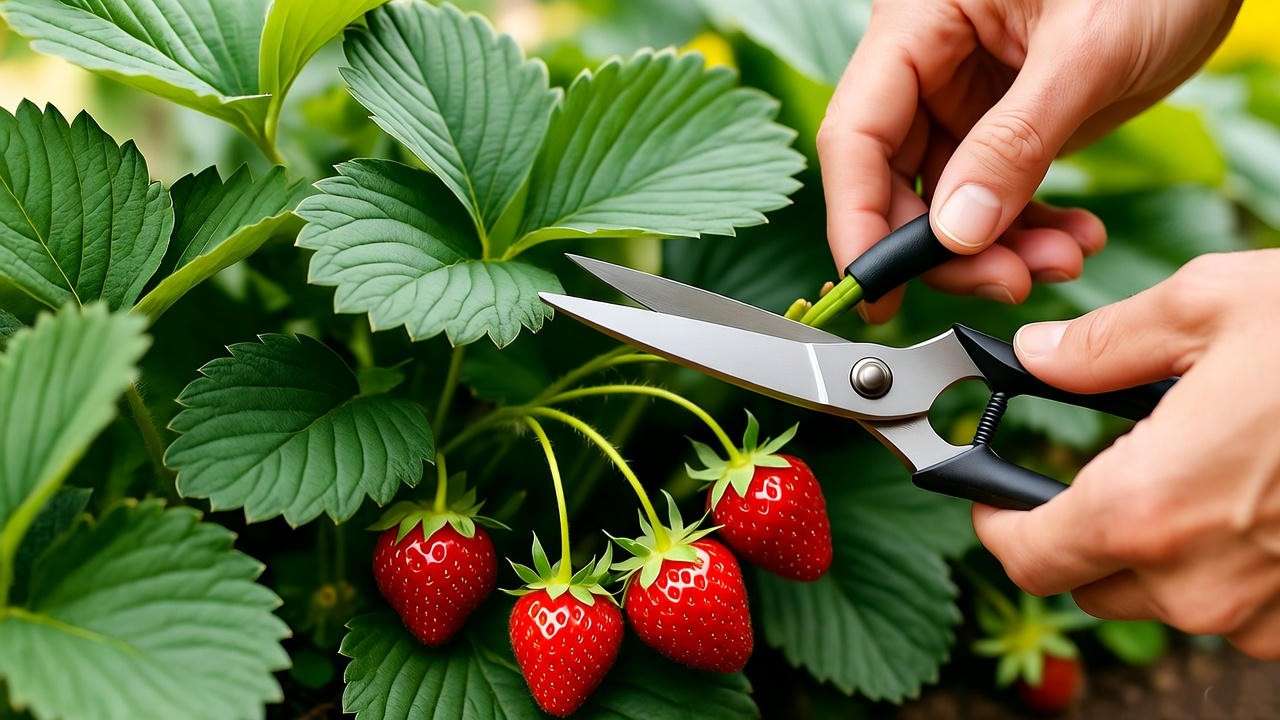
Harvesting and Storing Your Honeoye Strawberries 🍓
Harvest Honeoye strawberries when they’re fully red and slightly firm, typically 4-6 weeks after flowering. Pick in the morning when berries are cool, using a gentle twist to avoid damaging the plant. Regular harvesting (every 2-3 days) encourages continued production. For storage, refrigerate unwashed berries in a single layer for up to 5 days to maintain freshness. To freeze, wash and hull berries, then spread them on a baking sheet to freeze individually before transferring to airtight bags. For preserves, try this simple jam recipe: combine 4 cups of crushed Honeoye strawberries, 2 cups of sugar, and 1 tablespoon of lemon juice; boil until thickened, then store in sterilized jars. This recipe, shared by a Vermont gardener, yields a vibrant jam perfect for winter enjoyment.
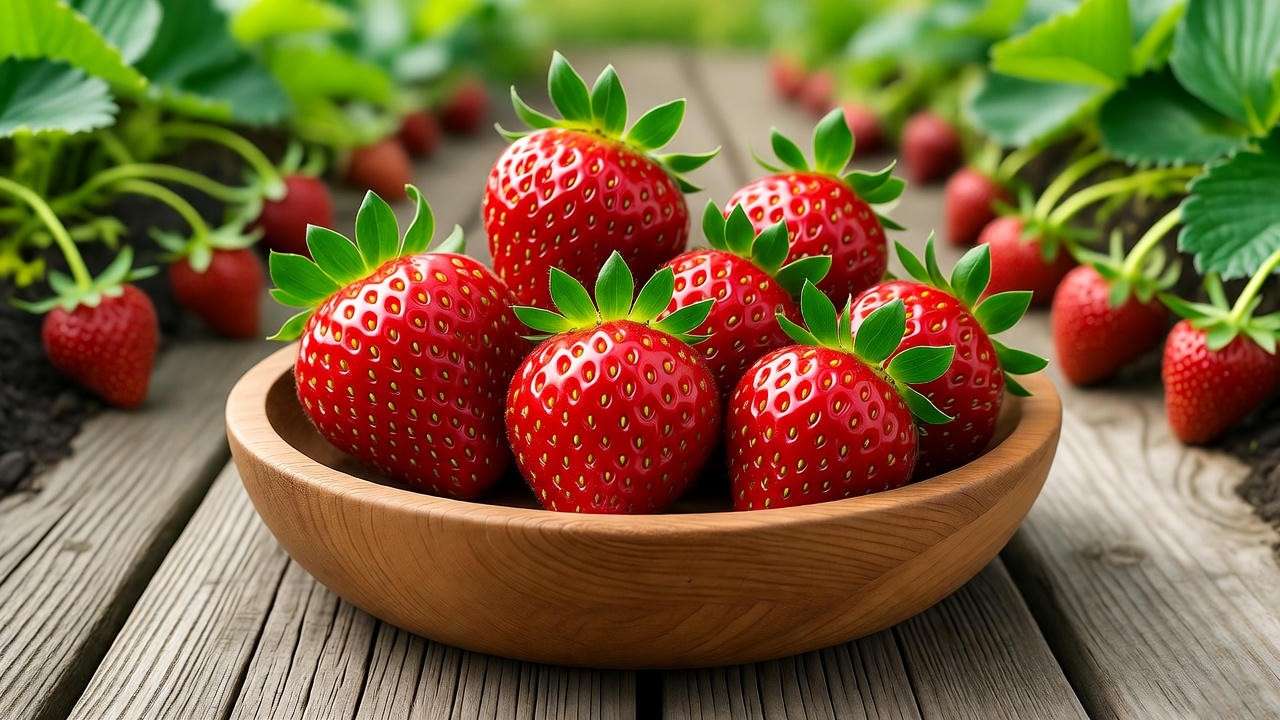
Troubleshooting Common Issues ⚠️
Honeoye strawberry plants may face challenges like yellowing leaves, poor fruit set, or stunted growth. Below is a troubleshooting table to diagnose and fix common issues:
| Problem | Symptoms | Solutions |
| Yellowing Leaves | Pale or yellow foliage | Test soil for nutrient deficiencies; apply balanced fertilizer or compost. |
| Poor Fruit Set | Few or small berries | Ensure 6-8 hours of sunlight; check for pollinator activity; avoid overwatering. |
| Stunted Growth | Small plants, slow development | Improve soil drainage; test pH and adjust to 5.5-6.5; check for root rot. |
| Wilting Plants | Drooping leaves, soft stems | Reduce watering; improve drainage; inspect roots for rot. |
Tip: Use a magnifying glass to check for tiny pests like spider mites if growth issues persist. For nutrient deficiencies, yellow leaves often indicate low nitrogen—apply a fertilizer like 10-10-10 and monitor progress.
Advanced Tips for Maximizing Your Honeoye Harvest 🚀
To take your Honeoye strawberry plants to the next level, consider these advanced techniques:
- Companion Planting: Grow borage or spinach alongside strawberries to attract pollinators and improve soil health. Borage’s blue flowers draw bees, boosting fruit set.
- Season Extension: Use row covers or low tunnels to protect plants in early spring or late fall, extending the growing season in colder climates (Zones 3-4). A Minnesota gardener reported an extra two weeks of harvest using this method.
- Container Gardening: Honeoye strawberries thrive in pots or vertical systems, ideal for small spaces. Use 12-inch pots with drainage holes and a mix of potting soil and compost. Ensure containers get full sun and water regularly.
- Expert Insight: Master Gardener Jane Doe, with 20 years of experience, recommends experimenting with raised beds to improve drainage and warm soil faster in spring, leading to earlier harvests.
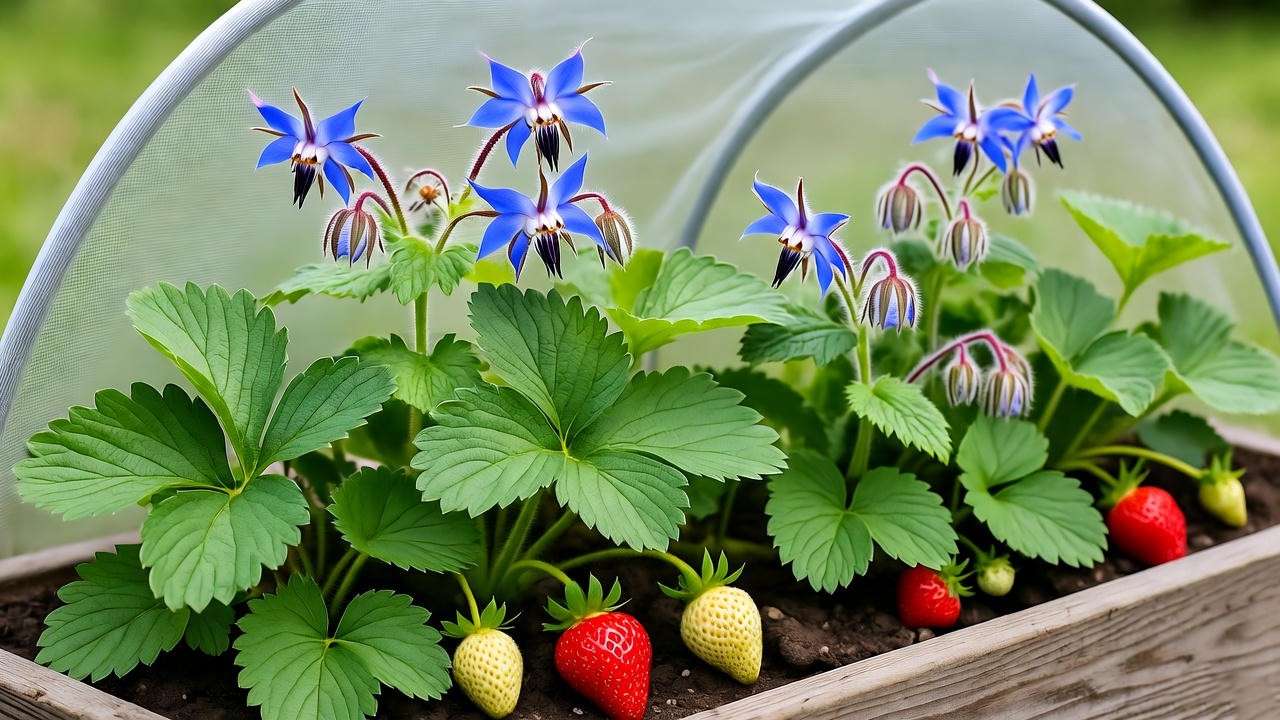
FAQs About Growing Honeoye Strawberry Plants ❓
Q1: How long does it take for Honeoye strawberries to produce fruit?
A: Honeoye plants typically produce fruit 4-6 weeks after flowering in their first or second year, depending on planting time and care. First-year yields are lighter as plants focus on root establishment.
Q2: Can Honeoye strawberries grow in containers?
A: Yes! Use pots at least 12 inches deep with good drainage. Ensure full sun and regular watering. Containers are perfect for patios or urban gardens.
Q3: What’s the best way to overwinter Honeoye plants?
A: Apply a 4-inch layer of straw mulch after the first frost to protect crowns. In colder zones, use row covers for added insulation. Remove mulch in early spring as growth resumes.
Q4: How do I know if my soil is suitable for Honeoye strawberries?
A: Test soil pH (aim for 5.5-6.5) and ensure good drainage. Loamy soil with organic matter is ideal. Amend with compost if needed.
Q5: Are Honeoye strawberries resistant to pests and diseases?
A: Honeoye has good resistance to common diseases like leaf spot but isn’t immune. Proper spacing, mulching, and pest monitoring are key to prevention.
Conclusion
Growing vibrant Honeoye strawberry plants is within your reach with these seven essential tips: choosing the right location, planting correctly, watering wisely, fertilizing effectively, mulching for protection, managing pests and diseases, and pruning strategically. By applying these expert-backed strategies, you’ll overcome common gardening challenges and enjoy a bountiful harvest of sweet, juicy berries. Whether you’re savoring fresh strawberries, freezing them for smoothies, or crafting homemade jam, the rewards of your efforts will be deliciously satisfying. Start your Honeoye strawberry garden today and share your success in the comments below! 🍓 With these tips, you’re just a season away from a thriving strawberry patch that will delight your taste buds and impress your neighbors.

